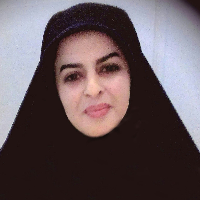The Petrographic Analysis of Thin Sections on the Non-Glazed Painted Pottery Ceramics of Islamic Era in Qeshm Island
Author(s):
Article Type:
Research/Original Article (دارای رتبه معتبر)
Abstract:
Qeshm island is located in the northern coast of the Persian Gulf in the estuary of it in the span of Hormouz channel and its location on the communication routes have long affluence extensive commercial communications with other areas. During Archeological surveys were carried during two seasons in 2007 and 2012 by Ali Reza Khosrowzadeh were identified 161sites and a considerable number of marked potteries too which They are important. This type has a wide distribution in the northern and southern coasts of the Persian Gulf and appears to have spread throughout the northern and southern coasts of the Persian Gulf during Islamic times. But most of archaeological researches have been concentrated on the south of the Persian Gulf and archaeological information from the northern area is scattered and inadequate. Therefore, in order to identify and introduce this lesser known type of Pottery in Iran and for its mineralogical purpose14 sampled unglazed painted potteries were selected for microscopic examination and the samples were analyzed by thin section petrographic analysis using polarizing light microscope. The microscopic studies were an attempt to answer the questions: What are the mineralogical characteristics of Qeshm Island potteries? What are the similarities and differences in minerals among the tested samples? how is the quality and amount of making potteries? Considering Qeshm is located in the Zagros structural zone due to its geological location that saws the carbonate sedimentary and sandstone. These characteristics correspond with the findings of the potteries from Qeshm. The most common mineral in the sample structure is quartz and all samples have but one sample of grog, but some different minerals and rocks are remarkable in the samples. Furthermore, all the pottery samples have the same structure and porphyry texture. Iron oxide was used in the color of all samples. The most potteries are baked at a temperature of about 8000C. So most of them have enough baking
Keywords:
Language:
Persian
Published:
Iranian Archaeological Research Journal, Volume:11 Issue: 28, 2021
Pages:
153 to 172
magiran.com/p2290162
دانلود و مطالعه متن این مقاله با یکی از روشهای زیر امکان پذیر است:
اشتراک شخصی
با عضویت و پرداخت آنلاین حق اشتراک یکساله به مبلغ 1,390,000ريال میتوانید 70 عنوان مطلب دانلود کنید!
اشتراک سازمانی
به کتابخانه دانشگاه یا محل کار خود پیشنهاد کنید تا اشتراک سازمانی این پایگاه را برای دسترسی نامحدود همه کاربران به متن مطالب تهیه نمایند!
توجه!
- حق عضویت دریافتی صرف حمایت از نشریات عضو و نگهداری، تکمیل و توسعه مگیران میشود.
- پرداخت حق اشتراک و دانلود مقالات اجازه بازنشر آن در سایر رسانههای چاپی و دیجیتال را به کاربر نمیدهد.
In order to view content subscription is required
Personal subscription
Subscribe magiran.com for 70 € euros via PayPal and download 70 articles during a year.
Organization subscription
Please contact us to subscribe your university or library for unlimited access!



